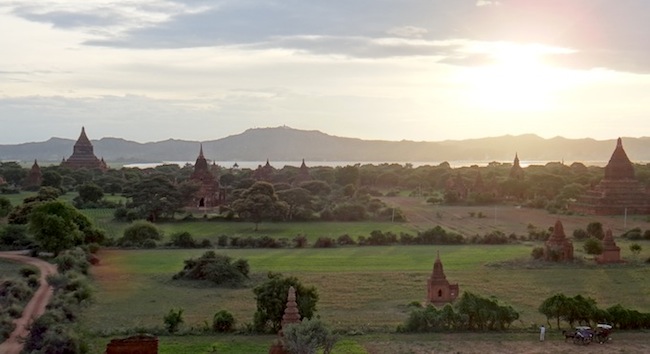 Bagan counts most temples per square kilometer in the world.
Bagan counts most temples per square kilometer in the world. by Ole Chavannes, 05 september 2013
Low light throws a red glow across the dusty plains of Bagan, that is dotted with thousands of brick pagodas. No other place in the world has as many temples per square kilometer. The sight is so incredible, it seems almost unreal. Why are there so many religious buildings in this dry land?
We’re on a short holiday - for the first time we got here (4 months ago), I got 4 days off. It is a 12 hour night bus drive from Yangon, with a very comfortable and cheap bus. There are plenty of affordable hotels with pools (to cool down!) and silly but silent ‘e-bikes’ (electronic bicycles) for rent; driving in between the pagodas across bumpy dust roads is the best way to explore and enjoy the area.
Bagan is a quiet, dry and boiling hot zone. It is a famous tourist attraction, but it never feels crowded. Within 104 km2 there are over 2200 temples and pagodas that are open to all. These are the ones that survived; over a millennium ago there were over 10.000.
This ancient region is located in the middle of Myanmar and used to be the capital of the Kingdom of Pagan, the first kingdom to unify the regions that would later constitute modern Myanmar. The classical name for Bagan, derived from Old Burmese, is ‘Arimaddana-pura’, which literally means ‘the city that tramples on enemies’.
What seems a peaceful place now, used to be the political, economic and cultural nerve center in the 10th century. Over the course of 250 years, Bagans rulers constructed all these religious monuments and it was known in the entire region for its wealth and intellectual grandeur. Its culture was dominated by religion, but more unorthodox than common in surrounding empires. Several kinds of Buddhism and Hinduism mixed with native animist traditions (called ‘nat’). This explains the world record of temple density.
The Pagan empire collapsed in 1287 after repeated Mongol invasions. The city, home to up to 200,000 people than, was reduced to a small town, that is now inhabited by e-bike renters and amazed tourists.
